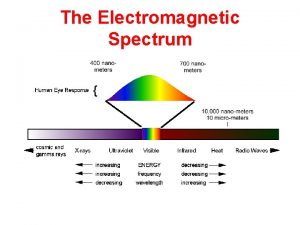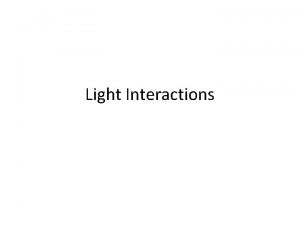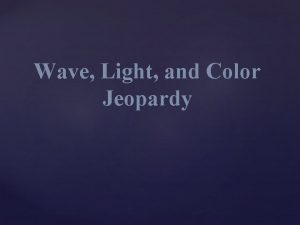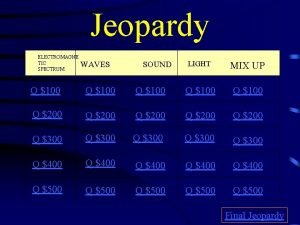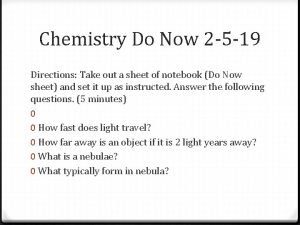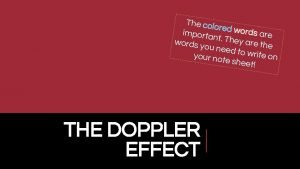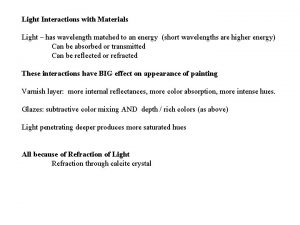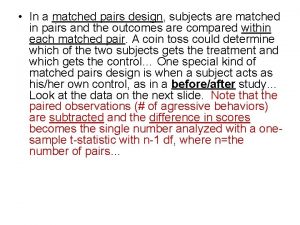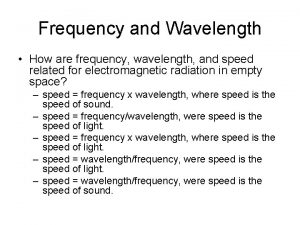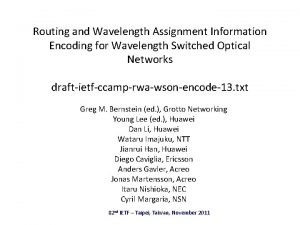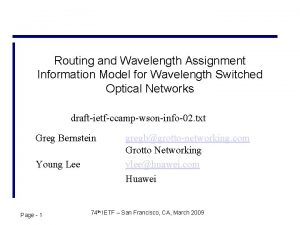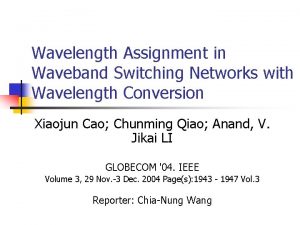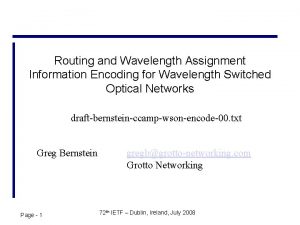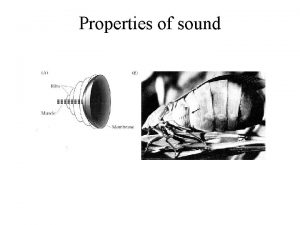Light Interactions with Materials Light has wavelength matched














- Slides: 14

Light Interactions with Materials Light – has wavelength matched to an energy (short wavelengths are higher energy) Can be absorbed or transmitted Can be reflected or refracted These interactions have BIG effect on appearance of painting Varnish layer: more internal reflectances, more color absorption, more intense hues. Glazes: subtractive color mixing AND depth / rich colors (as above) Light penetrating deeper produces more saturated hues All because of Refraction of Light Refraction through calcite crystal

Light Reflection and Refraction: How it affects the painting appearance Reflected ray Air, n. D ~ 1. 00 crystal, n. D > 1. 00 Quartz 1. 55 ave malachite 1. 81 ave - Higher index of refraction in crystal, - Slower light velocity through crystal, - Causes ray to “bend”, - Emerges into air with original direction Air, n. D ~ 1. 00 Refracted ray Original ray if no refraction occurred

How the ground makes a difference Light through oil with red pigment particles on white ground : some light is reflected back out Light through oil with red pigment particles on black ground : all light is absorbed. None is reflected back out

Actually, it’s more complicated than that. . . reflected ray: specular reflection refracted ray: diffuse reflection reflected specular light --> Eye sees White reflected diffuse light without absorption--> Eye sees White reflected light off pigment with aabsorption --> Eye sees Red (color)

The Effect of a Varnish Layer Air, n. D ~ 1. 00 Varnish, n. D ~ 1. 50 Paint layer, n. D ~ 2. 5 Large difference in index of refraction, Dn = 1. 5 causes mainly diffuse reflections from surface and little penetration of light into paint. Produces less saturated colors. Paint layer, n. D ~ 2. 5 Smaller difference in index of refraction, Dn = 1. 0 causes increased light penetration into paint and more refraction and absorption by pigment. Produces deep, rich colors.

Internal Reflections in Varnish Layer Reflected rays after absorption by pigment Varnish layer, Paint layer Multiple reflections within varnish layer, Allow light to be absorbed by pigment Causes more saturated colors.

1 2 3 4 5 6 Internal Light interactions, Up-close Rays 1 & 2: no absorption by pigment; reflects all light -->white Oil with red pigment particles How greater penetration of light into oil layer with pigment particles increases saturation. Rays 3 & 4: absorbed by one particle; weak red reflection --> pink Rays 5 & 6: absorbed by two particles; strong red reflection: red 400 500 600 700

How Van Eyck differs from the others Thick layer of paint covered by thin varnish lets little light through, looks flat Van Eyck Combination of internal reflections in varnish and glaze layers gives depth. varnish second glaze first glaze thin underpainting chalk ground oak panel

Light Refraction: How it reveals a pigment’s identity Isotropic It’s all about the Index of Refraction Anisotropic Cubic crystal Tetragonal crystal Rhombic crystal a a a b b b c c a = b = c Symmetric in all directions n. D same in all directions a ≠ b ≠ c a = b ≠ c na , nb , ng ne , nw three values two values Isotropic Iso = same Tropic = rotate Non-symmetric in all directions More than one n. D value Anisotropic

polarized light non- polarized light Check out result of polarizers……

It’s all about the Index of Refraction and Polarized Light Isotropic Cubic crystal a = b = c Symmetric in all directions n. D same in all directions entering light emerging light polarizer with parallel polarizers, you see --> analyzer with crossed polarizers, you see --> Your Eyes see black! No light emerges from analyzer

It’s all about the Index of Refraction and Polarized Light Anisotropic Tetragonal or rhombic crystal n. D different in at least two directions a b c c entering light emerging light polarizer with parallel polarizers, you see --> analyzer with crossed polarizers, you see --> You see glowing crystals against black!

Part of pigment table from Stout and Gettens: note info

 Which colour has the longest wavelength
Which colour has the longest wavelength Translucent examples
Translucent examples Which color has the shortest wavelength
Which color has the shortest wavelength Which wave has the shortest wavelength?
Which wave has the shortest wavelength? Which has the longest wavelength
Which has the longest wavelength Wavelength of red light
Wavelength of red light Light intensity formula
Light intensity formula Wavelength of light
Wavelength of light Loght spectrum
Loght spectrum Light light light chapter 23
Light light light chapter 23 Into the light chapter 22
Into the light chapter 22 Light light light chapter 22
Light light light chapter 22 Natural materials
Natural materials Example useful and harmful materials
Example useful and harmful materials Natural materials and man made materials
Natural materials and man made materials
